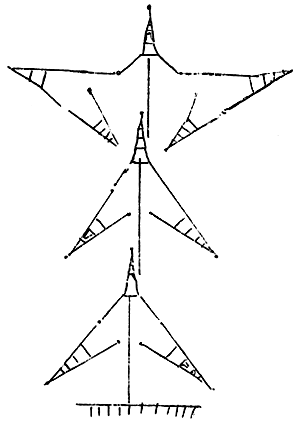by
K.J. Rigopoulos
Technologist of Fishing and Oceanography
S. Venizelou 83, Agii Anargyri Attikis
Athens, Greece
In Greece, eels are common in most rivers, estuaries, lakes, ponds and in the sea. The colour of the eel varies with the habitat, for example: in clean waters it is green and the belly is white, but in dirty waters it is brown, yellow or dark.
There are three types of eel in Greece:
These differ in body, colour, etc.
The eel grows to a maximum length of 140 cm and a weight of 10 kg; but the average size and weight is 40–100 cm and 2–6 kg.
These eels spend a considerable time feeding and growing in freshwater where the diet is composed entirely of bottom living animals chiefly: molluscs, insect larvae, small fish, crustaceans, etc. After 5 to 7 years they begin migrating to the sea in thousands in dark moonless nights during flood flows after heavy rainfall in the period from October to January.
Spawning takes place in the Sargasso Sea in spring and early summer. From eggs, they become young larvae-leptooephali and from these they metamorphose to transparent eel shaped “glass-eel” with a length of 2–3 cm and as such they arrive on the European coast after two to three years. In Greece the period of arrival on the coast is from November to mid-May. At that time the waters are black with young eels.
The fishermen catch them with a special net and transport them to some rivers where they grow.
1. EEL FISHING AREAS IN GREECE WITH ANNUAL PRODUCTION
The Greek fishermen catch eels from autumn to winter, in some rivers, estuaries, ponds and in the sea. The principal areas in Greece where eel fishing is carried on and the annual production of each in kilogrammes are as follows:
| (a) | Patraikos: | 20 000 kg |
| Prokopos, Papas, Korychi, Agoolinitsa, Mooria: (Agoolinitsa and Mooria are not producing eels since 1969 as these areas have been drained for agricultural production) | 200 000 kg | |
| Messolonghi: | 30 000 – 40 000 kg | |
| Petalas | 5 000 kg | |
| Vonitsa | 10 000 kg | |
| (b) | Amvrakikos (Logaru, Tsookalio, Preveza, Agrilos, Palametro, Niochori, etc.): | 400 000 kg |
| (c) | Kerkyra (Corfu) and Sagiada (Alexandrcopolis, Keramoti, Komotini, Booru): | 15 000 kg |
| Thermissia, Ioannina, Trichonis, Lyssimachia, etc: | 5 000 kg |
The total annual production of eels in Greece is about 600 000 kg of which only about 10 percent is for home consumption, the balance is exported live either by special vessels (cap. 50–100 t) or lorries (8 to 10 t) to Italy, Netherlands and Germany. The time of maximum production is November and December.
2. METHODS OF FISHING EELS IN GREECE
In Greece the gear employed to catch eels is usually one of the following:
DISCUSSION: No discussion

Fig. 1 “Volkos”
 |  |
| (a) “Volkos” | (b) “Kamaci” |